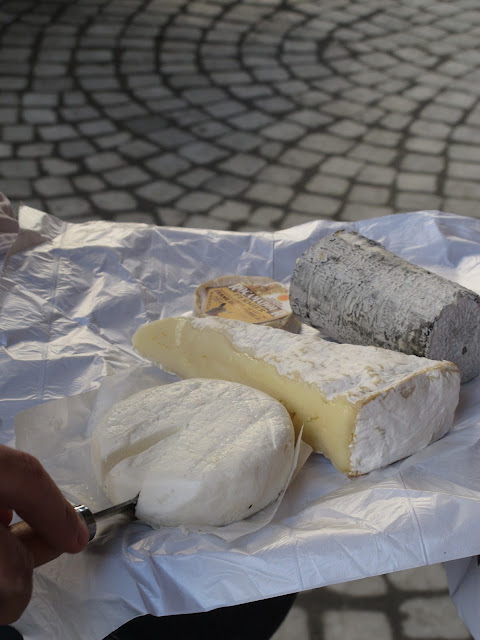A few weeks ago, we celebrated Elie’s birthday with
food and music enjoyed with family and friends.

Elie’s only
food request was for an andouille and shrimp jambalaya—he’s been searching for
a replica of a dish he ate in Charleston, South Carolina several years
ago. We didn’t even find a
comparable version on our trip to New
Orleans.
We made
the jambalaya, and the rest of the menu followed the same New Orleans theme,
including a pecan-studded coleslaw, tomato and cucumber salad, cheesy grits and homemade
cornbread. But
one of the crowd favorites was actually the Vegetarian Muffaletta. I’m sharing that recipe with you.
 |
| sunflowers & mason jars... |
 |
| Carolyn & Elie, chopping veggies for the jambalaya! |
 |
| Lisa, assembling the muffaletta |
I think Elie enjoyed the food—but what he (and I!)
really treasured was being able to spend time with people he loves. It’s a gift we don’t take for
granted—having incredible people in our lives we value and respect.
I hope you enjoy this recipe as much as we did—and
make it to share with the people you love.
 |
| Making the Vegetarian Muffalettta |
Vegetarian Muffaletta
Serves 8, as
an appetizer
1 loaf ciabatta
1 cup olive
salad, recipe follows
½ cup canned
artichoke hearts, drained and chopped
2 – 3 roasted
red peppers*
4 ounces
fontina, sliced thin
4 ounces
provolone, sliced thin
Preheat oven to 350 degrees.
Slice the bread in half lengthwise, and remove enough
of the inside to make room for the fillings. Place one layer of fontina on the top
half and one layer of provolone on the bottom half. On top of the provolone, layer the
roasted red peppers, artichoke hearts and olive salad. Place top half on top o f the olive
salad.
Wrap tightly in aluminum foil and bake for 20 – 25
minutes or until bread is warm and cheese is melted. Slice. Serve warm and enjoy.
The Muffaletta can be assembled, wrapped and stored in
the refrigerator for up to 24 hours before baking.
Olive Salad
1 cup pitted
Kalamata olives
1 cup large
pimiento-stuffed green olives
3 – 4
pepperoncini
2 – 3 tablespoons
capers, drained
¼ cup celery,
finely c hopped
¼ cup carrots,
shredded
1/4 cup
extra-virgin olive oil
¼ teaspoon
crushed red pepper flakes
¼ teaspoon
celery seeds
2 – 3
tablespoons minced fresh flat-leaf parsley
Place Kalamata olives, green olives and pepperoncini
in the bowl of a food processor. Pulse
until coarsely chopped. Pour
the mixture into a bowl and stir in remaining ingredients. Olive salad will keep in the
refrigerator, covered, for up to a week.





































